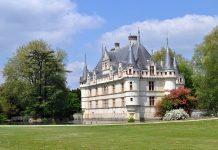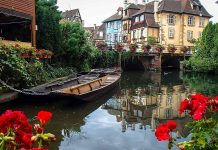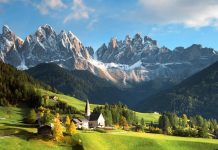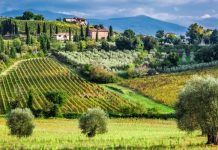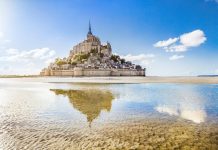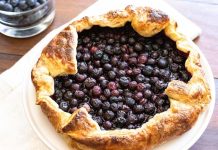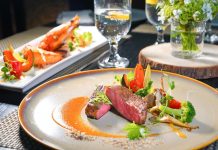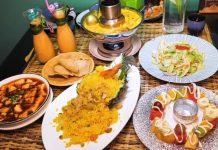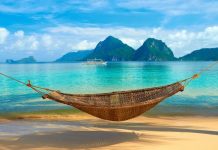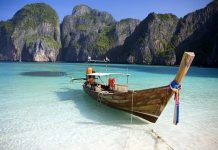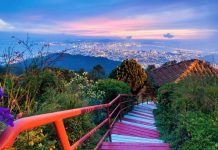
Tuscany: Rolling Vineyards & Artistic Countryside
Tuscany, Italy’s heartland of culture, wine, and breathtaking landscapes, is a dream destination for travelers seeking both relaxation and inspiration. With its undulating vineyards, medieval hilltop towns, and Renaissance masterpieces, this region offers an intoxicating blend of natural beauty and artistic heritage. Whether you’re sipping world-class Chianti, wandering through Florence’s Uffizi Gallery, or cycling through the Val d’Orcia, Tuscany captivates at every turn.
The Enchanting Vineyards of Tuscany
Tuscany is synonymous with wine, producing some of Italy’s most celebrated varieties. The region’s rolling hills are blanketed with vineyards that yield iconic wines such as:
- Chianti Classico – Recognizable by its black rooster label, this ruby-red Sangiovese-based wine is bold and fruity.
- Brunello di Montalcino – A rich, full-bodied red from the town of Montalcino, aged for years to perfection.
- Vino Nobile di Montepulciano – Another Sangiovese star, known for its elegance and depth.
- Super Tuscans – Innovative blends that often include Cabernet Sauvignon and Merlot, defying traditional winemaking rules.
Must-Visit Wine Regions:
- Chianti – The most famous wine route, dotted with historic estates like Castello di Brolio and Antinori nel Chianti Classico.
- Montalcino – Home to Brunello, where you can tour family-run wineries like Banfi and Poggio Antico.
- Montepulciano – A Renaissance gem with underground cellars aging Vino Nobile.
- Bolgheri – The coastal area producing exceptional Super Tuscans like Sassicaia and Ornellaia.
Many wineries offer tastings paired with local pecorino cheese, cured meats, and olive oil—making for an unforgettable gastronomic experience.
The Artistic Soul of Tuscany
Beyond its vineyards, Tuscany is an open-air museum, boasting some of the world’s greatest art and architecture.
Florence: The Cradle of the Renaissance
- Uffizi Gallery – Houses Botticelli’s The Birth of Venus and da Vinci’s Annunciation.
- Accademia Gallery – Michelangelo’s David stands in majestic glory here.
- Duomo (Cathedral of Santa Maria del Fiore) – Climb Brunelleschi’s dome for panoramic city views.
- Ponte Vecchio – A medieval bridge lined with jewelry shops, perfect for sunset strolls.
Siena: Gothic Grandeur
Famous for its Piazza del Campo, where the Palio horse race takes place twice a year. The Siena Cathedral is a masterpiece of striped marble and intricate frescoes.
San Gimignano: The Medieval Manhattan
This UNESCO-listed town is known for its 14 surviving towers, once symbols of noble families’ power. Don’t miss Gelateria Dondoli, a world champion gelato shop.
Pisa: More Than Just the Leaning Tower
While the Leaning Tower is the star, the Piazza dei Miracoli also includes the stunning Baptistery and Camposanto Monumentale.
The Timeless Countryside: Val d’Orcia & Beyond
A UNESCO World Heritage Site, Val d’Orcia is the epitome of Tuscan beauty—golden wheat fields, cypress-lined roads, and rustic farmhouses.
Best Ways to Explore:
- Driving the Scenic Routes – The SP146 from Pienza to Montalcino offers postcard-perfect views.
- Hot Air Ballooning – Float above the hills at sunrise for a magical perspective.
- Cycling & Hiking – Trails like the Via Francigena (an ancient pilgrimage route) let you immerse in nature.
- Agriturismo Stays – Sleep in a restored farmhouse, enjoying homemade pasta and local wine.
Tuscan Cuisine: A Feast for the Senses
Tuscan food is hearty, simple, and deeply flavorful. Must-try dishes include:
- Bistecca alla Fiorentina – A thick, juicy T-bone steak, grilled over wood fires.
- Pappa al Pomodoro – A rustic tomato and bread soup.
- Ribollita – A vegetable and bread stew, perfect for cooler days.
- Cantucci & Vin Santo – Almond biscuits dipped in sweet dessert wine.
Pair meals with a glass of local wine, and finish with pecorino cheese drizzled with honey.
When to Visit Tuscany
- Spring (April-June) – Wildflowers bloom, temperatures are mild, and crowds are manageable.
- Fall (September-October) – Harvest season brings wine festivals (vendemmia) and golden landscapes.
- Summer (July-August) – Busy but lively, ideal for beach trips to the Maremma coast.
- Winter (November-March) – Quieter, with festive Christmas markets in Siena and Florence.
Final Thoughts
Tuscany is a place where every moment feels like a painting come to life—whether you’re sipping wine at a sun-drenched vineyard, marveling at Renaissance art, or simply watching the sunset over the hills. Its blend of natural beauty, history, and culinary excellence makes it one of the world’s most enchanting destinations.


